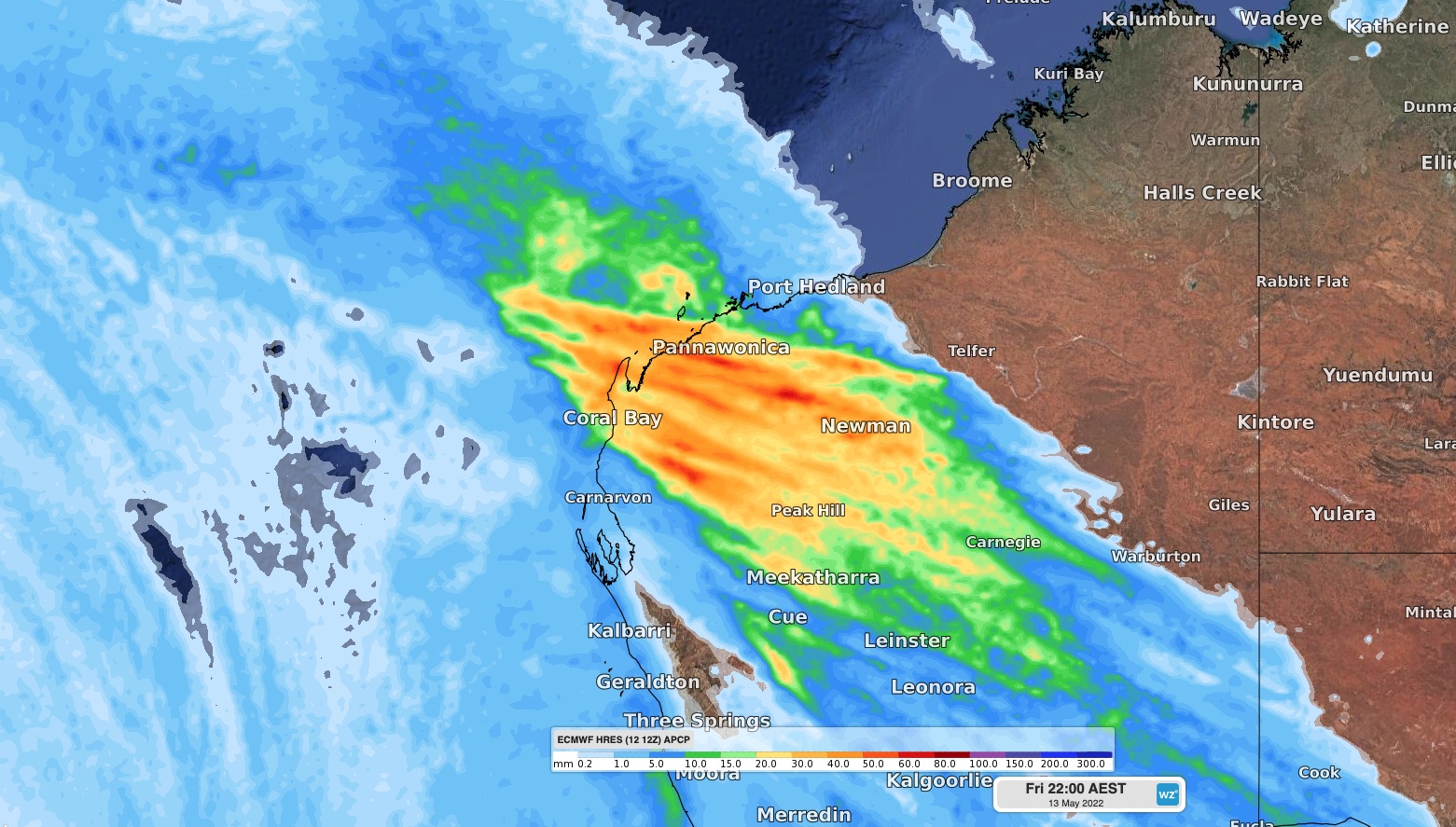A month’s worth of rain has fallen in parts of the west Pilbara during the last 24 hours as a rainband from the Indian Ocean sweeps over northwestern Australia.
Moisture from Ex-Tropical Cyclone Karim interacting with a strong cold front caused a thuck band of rain-bearing cloud to drift over the Gascoyne and western Pilbara districts of WA on Thursday into Friday morning.
Onslow in the Pilbara saw 49.8 mm of rain in the 24 hours to 9am on Friday, which is roughly equal to the site’s May monthly average and its highest daily total in a year. Nearby, Thevenard Island observed 43.2 mm and Learmonth, to the south of Exmouth, saw 31.6mm in the same period.
A damaging wind gust was also observed this morning at Varanus Island, with the station recording a 113 km/h gust at 7:10am WST.
The band of rain and thunderstorms will continue to spread from west to east over the Pilbara, eastern Gascoyne and Interior on Friday. A severe weather warning has been issued for heavy rain and damaging winds in parts of the Pilbara, where six hourly rainfall rates of 60 to 120 mm and wind gusts of 90 km/h are possible, particularly with thunderstorms.
Conditions will rapidly ease behind the band of rain and storms and calmer weather will return to the north of WA from Saturday. Weatherzone provides our mining clients with heavy rain, damaging wind and thunderstorm risk analysis out to seven days, for more information please contact us at apac.sales@dtn.com.






